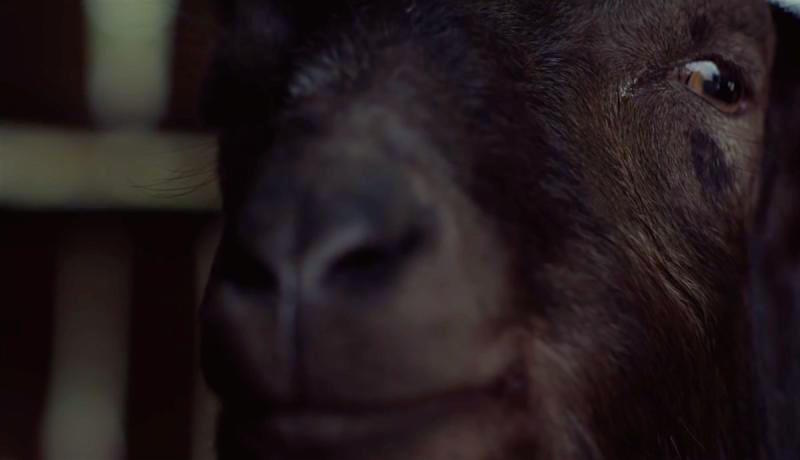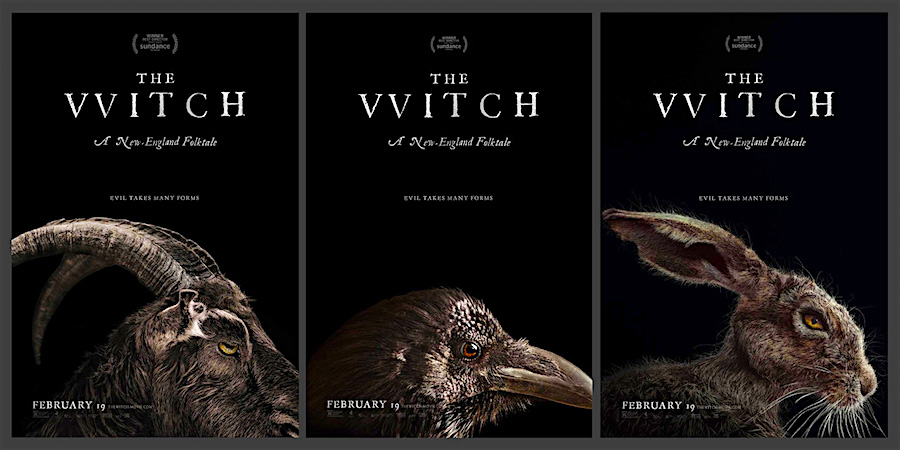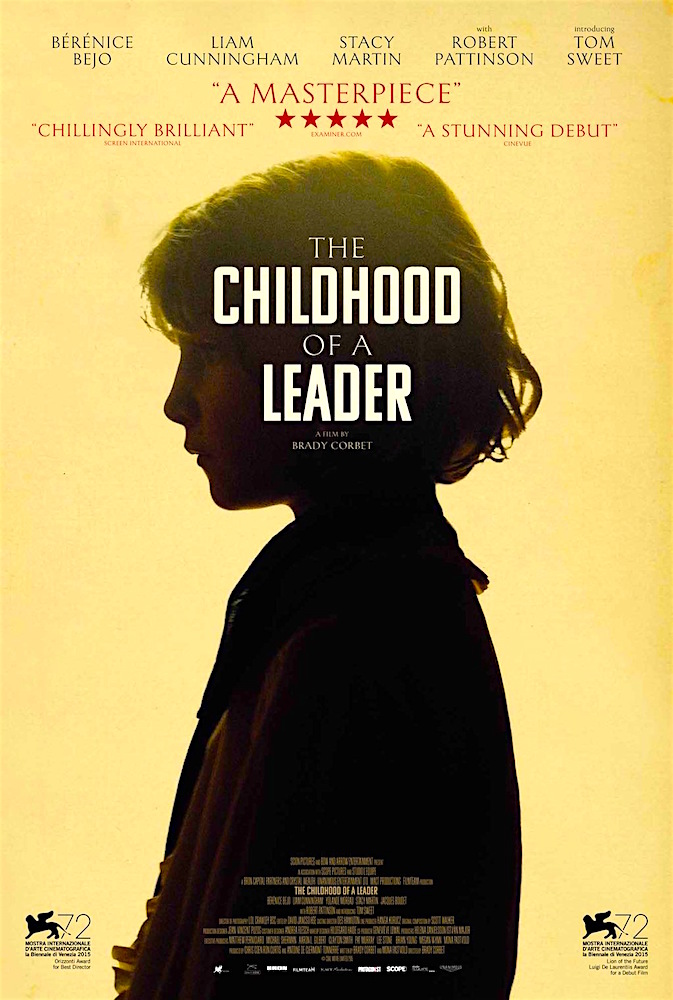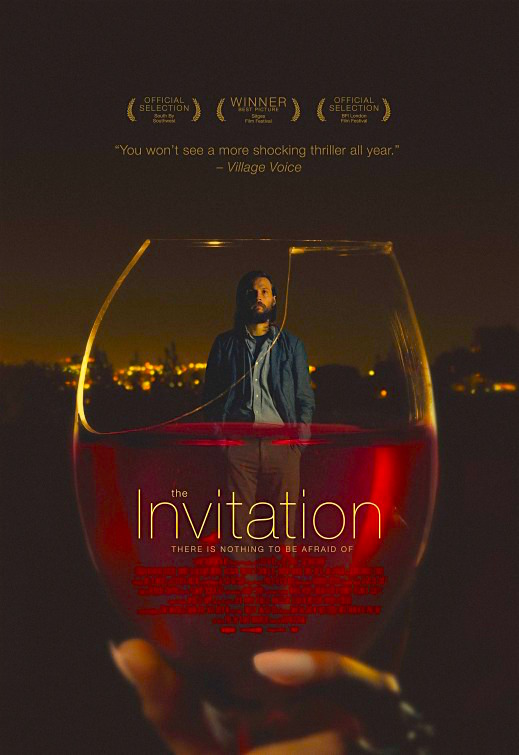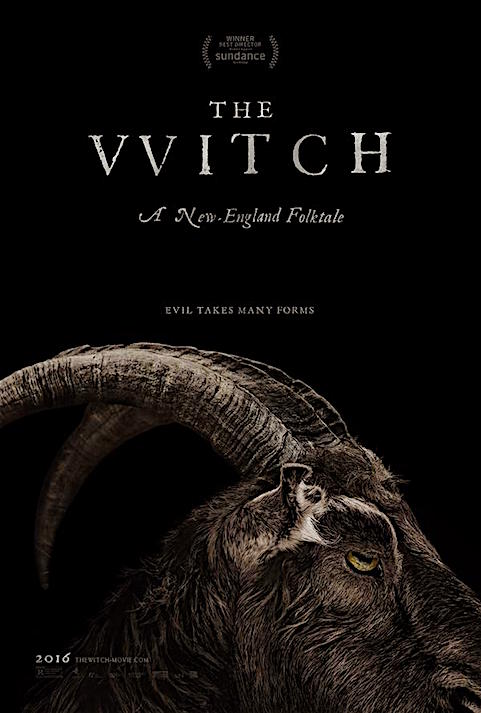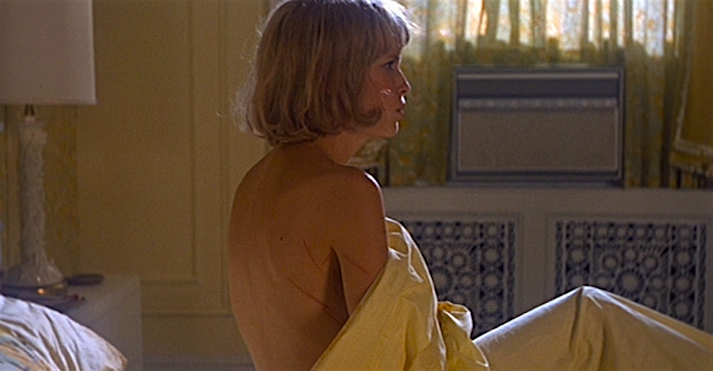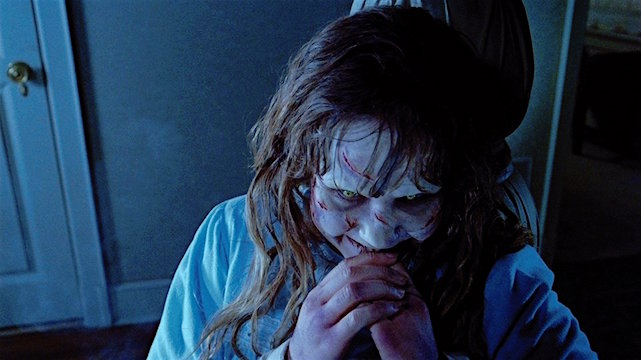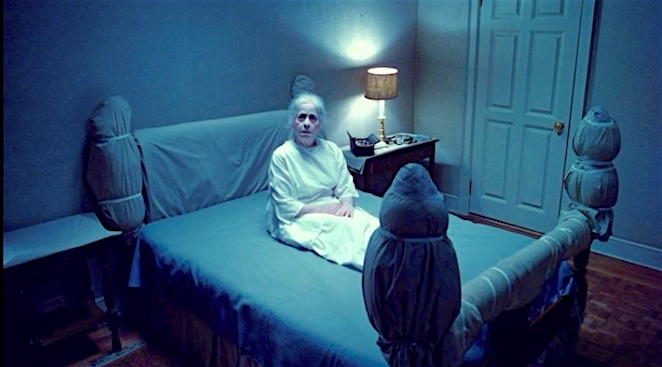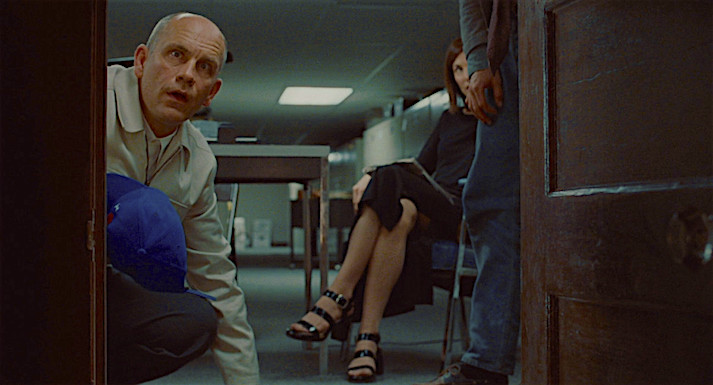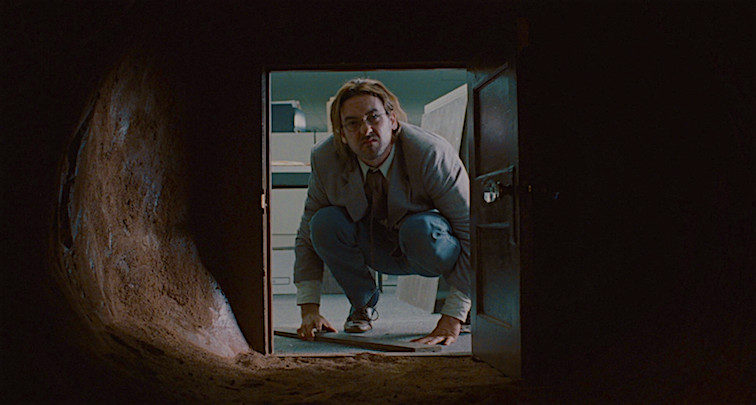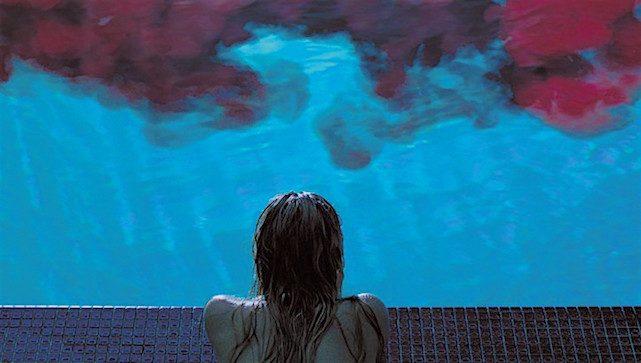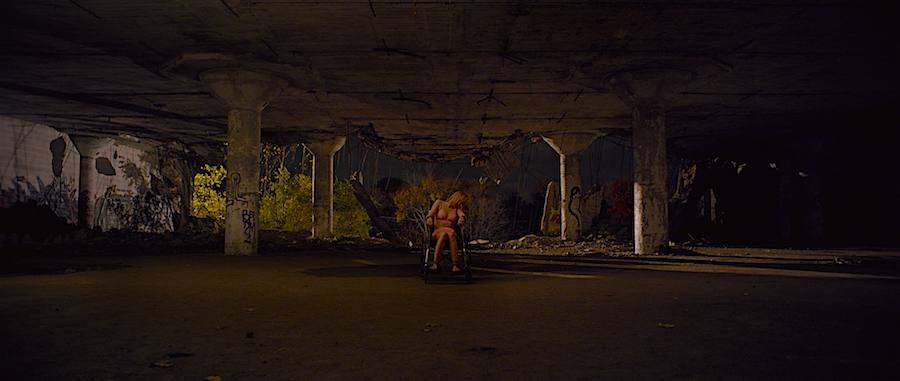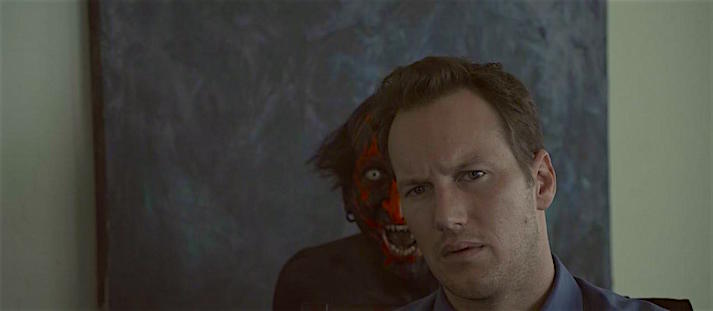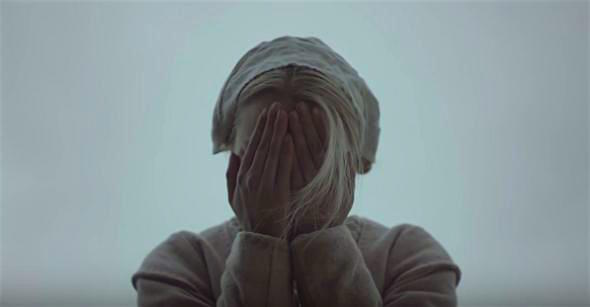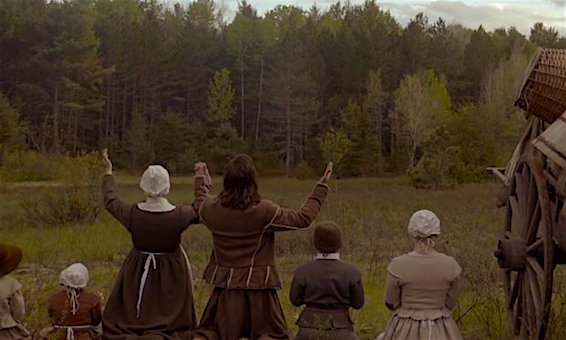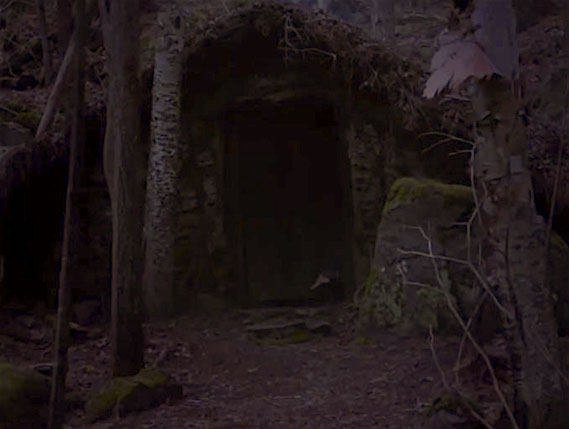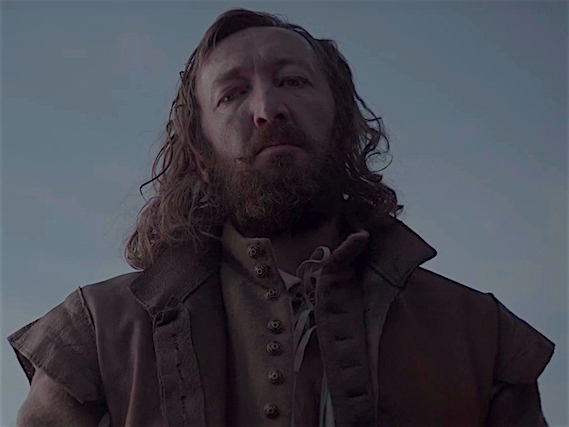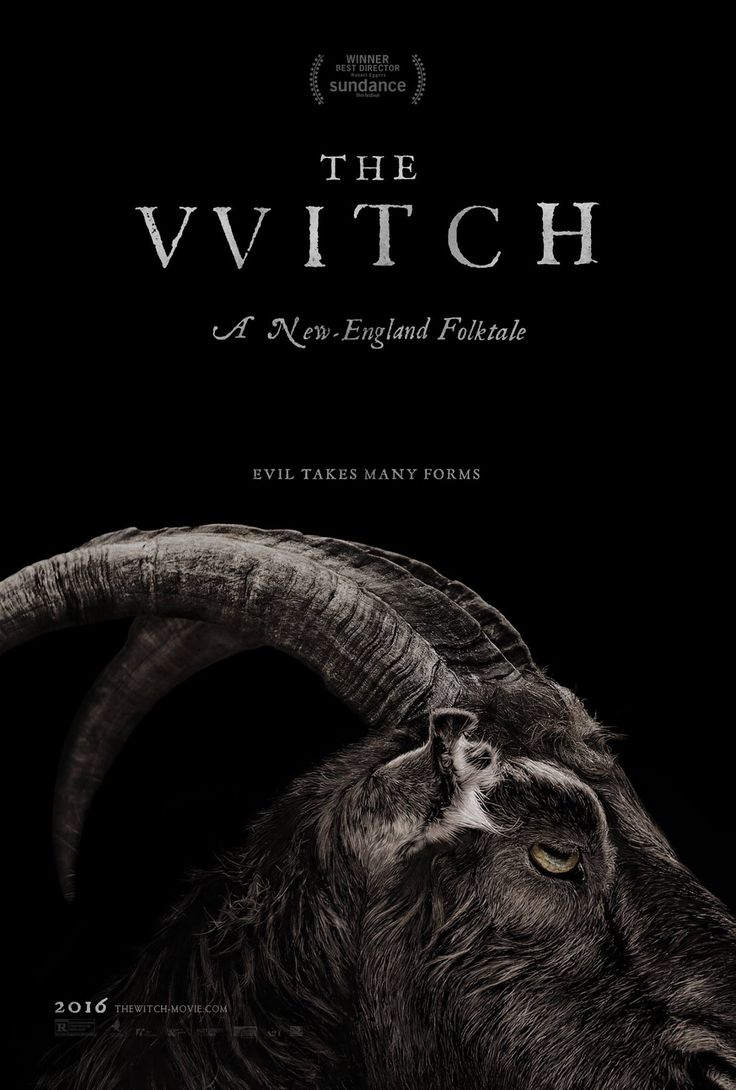
One of the best films to screen in 2015 will not be released to cinemas until next year. The Witch Robert Eggers, 2015
Yes, I know there are more than a couple of movies coming out before the year’s over. But none hold any interest for me. That’s just the way I roll. So, revised from the list I posted back just past the mid-point of the year:
Here are my favorite films of 2015. Some are actually from last year, but were not officially released until this year.
I’m relieved that I saw a few non-thriller/horror films that pulled me in. At the mid-point nearly all were horror movies. It has been a particularly strong year for Art Horror. Interestingly, one of the best films I’ve seen this year was a horror film that is not being released until 2016. This is despite much positive buzz on the Film Festival circuit. But you will not want to miss Robert Eggers’ The Witch.

The film may not have been exceptional, but Michael Fassbender didn’t just seem to “play” the role — for the span of the film he literally seemed to be Steve Jobs. A performance that should not be forgotten.
Michael Fassbender as
STEVE JOBS
Danny Boyle, 2015
Cinematography | Alwin H. Kuchler
A number of movies that I thought might make my list just didn’t: Steve Jobs, The Walk, Carol, MacBeth, Crimson Peak, Anomalies, Room and High Rise struck me either as merely “good” or “interesting.” None were films I’d want to see again. But it is my opinion that Michael Fassbender and Brie Larson gave the impressive performances by leading actors. However, I could make an easy case for Josh Lucas’ brilliant performance as “Matt” in The Mend. But I still lean toward Fassbender’s ability to so effectively capture the truly iconic and historic master of design and marketing. I have not seen female actors come anywhere close to what Brie Larson manages to do in Room. Though Rinko Kikuchi’s work in The Zellner Brothers’ Kumiko The Treasure Hunter comes close.

An odd film becomes “realistic’ thanks to Brie Larson’s turn as “Joy.” In my opinion this was the most solid performance from a female film actor in 2015.
ROOM
Lenny Abrahamsson, 2015
Cinematography | Danny Cohen
Both Cate Blanchett and Rooney Mara did exceptional work in the Todd Haynes latest film. The problem for me is that Carol seemed so intentionally artificial that what they both did seemed more like “performance art” than human reflection. Several other acting turns were magnificent this year: The already mentioned Josh Lucas in The Mend, Elizabeth Moss in Queen of Earth, Anne Dorval in Mommy, Paul Dano in Love & Mercy and Sidse Babett Knudsen in The Duke of Burgundy all blew me away. Both James Hebert in Two Step and Sheila Vand in A Girl Walks Home Alone at Night made an incredible impact as relative unknowns.

A parody of usefulness…
Josh Lucas
THE MEND
John Magary, 2014
Cinematography | Chris Teague
Seth Rogen also scored in his portrayal of Steve Wozniak to Fassbinder’s Steve Jobs. Of course there are the two respective turns by Sally Field in Hello, My Name Is Doris and Lily Tomlin in Grandma. Both are exceptional, but neither are required to deliver more than variations of their personas. It worked for both, but neither exceeded what I’d expect from seasoned professional actors.
My list is in no particular order and I’m really not sure which is my absolute favorite film of the year. If I was pressed against a wall I’d probably say it was between Rick Avlverson’s Entertainment and Ana Lily Amirpour’s A Girl Walks Home Alone at Night. But wait! What about Miroslav Slaboshpytskiy’s The Tribe? That was amazing! Oh! And what about both Kumiko The Treasure Hunter? And what of Peter Strickland’s The Duke of Burgundy? I am just not sure which of these is best. Each of these films is unique unto itself with all have very different intentions and ideas.
See? I can’t ever pin-point just one film. Normally I require myself to restrict my list to only 10 films. But I was thinking: As this is my blog I will simply list the films that made my list of the best. So, in no particular order…
My Favorite Films Released in 2015

“Hi! I didn’t mean to scare you.” CREEP Patrick Brice, 2014
Technically, Patrick Brice’s film is from 2014. However, it was not released until this year. This has been a great year for Brice as a film artist. He had two film release credits to his name. His second film, The Overnight, offers itself as a very serious comedy that works quite well. But it is his collaboration with Mark Duplass that makes my list. The brilliance of Creep is largely fueled by the naturalistic performances from both Brice and Duplass. Fully plugging into Duplass’ sweet scrabby puppy dog charisma and channeling that into capturing an uncomfortable ambiguity within Brice’s own character’s fear. This odd perspective is explored just far enough to divert the audience. Creep carries itself with a darkly comic wink, but there is something far more sinister just out of the frame. Running just at about 80 minutes in length, Brice delivers a movie that elevates the concept of “found footage” to a new place and a new direction. On the surface, Creep is a fun adult horror movie. It is long after the credits roll that the underlying power really “creeps” up. This is an entertaining and deeply disturbing little movie. Sure, it’s only a horror movie. Now, keep telling yourself that as you realize that what you’ve just seen could not only happen — it most likely has. Exceptional film.
Staying closely connected to the idea of “fact is stranger than fiction,” comes Alex R. Johnson’s Two Step. This surprising independent film lead the audience in one direction and then up-ends the whole concept down a completely different road. Johnson’s feature length directorial debut is a stunner.

TWO STEP
Alex R. Johnson, 2014
It is a rare talent to be able to do this much with a limited budget. It is all the more amazing that this filmmaker is able to take the “predictable” and twist it into something altogether “UN” predictable. Another major asset for Two Step is the outstanding cast of actors. Every actor delivers strong and believable turns. Beth Broderick and Skyy Moore stand out in two of the film’s key roles. But the heavy hitting player is James Landry Hebert who not only brings a presence that fills the screen, it manages to raise the bar for capturing the cruelty of a “bad guy.” Watching Hebert in this role feels like we are watching a movie star who is destined to break big. This is an edge of the seat experience. An engaging, entertaining, intense, suspenseful and often shockingly brutal study of smalltime crooks. The film edges toward a truly menacing, horrific and unforgettable cinematic impression. Similar to but minus the dark humor of Creep, Two Step ‘s most unnerving aspect is that nothing we see is outside the realm of realism. If you’ve not seen it, be prepared. This is one surprisingly mean and twisted little movie. Alex R. Johnson is another filmmaker to watch. And his supporting actor, James Hebert, is a promising actor. I would be surprised if he doesn’t have a major career ahead of him.
Next on my list is Love & Mercy.

“I was sittin’ in a crummy movie
With my hands on my chin
All the violence that occurs
Seems like we never win…: – Brian Wilson
The only thing is there is nothing “crummy” about this film…
LOVE & MERCY
Bill Pohlad, 2015
From beginning to end, a near flawless film. Paul Dano (as young Brian Wilson) and John Cusack (as middle-aged Brian Wilson) are fantastic. However, it is Dano who really appears to capture the essence of the troubled American genius. Even with a somewhat limited budget, this film rises far above the bar of celebrity stories. The film is far less concerned with The Beach Boys history or music as it is with the way creativity and mental illness form a unique, disturbing and magical dance. This is a director’s film. Bill Pohlad’s film is equal parts interesting, innovative, creative and astounding. Unexpected and magical. I find it difficult to find any faults here. Love & Mercy lacks nothing.
Watching Xavier Dolan’s Mommy unfold is a mixture of annoyance, amazement and ultimately astonishing.

MOMMY
Xavier Dolan, 2014
The young director truly finds his footing between “artsy” and “eclectic” in this deceptively simple story of mother trying to come to terms with her son’s mental challenges. Dolan’s cinematographer, André Turpin, applies the director’s idea of trying to find a visual way to capture the limited and isolated reality that traps both mother and child. It is a bit challenging to adapt to this screen ratio in a cinema. In fact, if the cinema had not warned the Canadian audience, I think we all would have thought there was some sort of projection problem. As our eyes and senses adjust to both the visual concept and the intensely dire circumstances of the plot, there is no turning back. Dolan’s visual idea is fantastic. It is a transportive device. And if there are any people out there who have doubted Mr. Dolan’s skills, this movie should have put those thoughts to rest. This is a potent gut-punch of a movie! See it!
Next on the list is a whole new sort of twist on The American Movie Western. Slow West ‘s Kodi Smit-McPhee’s character reads a poster, he is quietly corrected:
“Wanted Dead or Alive…”
“Dead or Dead, kid.”
This was used as John Maclean’s Slow West movie’s tagline. It is one of those rare marketing moments when the tagline truly fits the film it seeks to catch your attention.

“So, now… East. What news?
“Violence and suffering. And West?”
“Dreams and toil.”
SLOW WEST
John Maclean, 2015
John Maclean’s Slow West defies expectations and stereotypes. Featuring some remarkable performances from Michael Fassbender, Kodi Smit-McPhee, Ben Mendelssohn and many others — this movie is aiming far higher than a genre film. This UK-New Zealand Independent Film takes the ideas of a The Wild West and the American Pioneers and delivers something altogether different and new. There is a constant sort of struggle going on between “myth” and “reality.” To further the point, Maclean’s film constructs itself from a rather tepid story into something far deeper. The subversion and dark humor only drive the heart of this film further. Slow West is a darkly comical, brutal and violent examination of survival and determination. But make no mistake, this amazing movie is all heart and incredibly human. Survival of the fittest means a great many things. And almost all of them are examined in one way or another within the confines of this movie.
Another film dated back to 2014 but released in the US early this year, Catch Me Daddy is another film that examined to what extent we humans will go to obtain freedom and personal chosen destinies.

“A great bird landed here. Its songs drew men out of rock. Living men out of bog and heather. Its song put a light in the valleys and harness on the long moors. Its song brought a crystal from space and set it in men’s heads. The bird died. Its giant bones blackened and became a mystery. The crystal in mens’ heads blackened and fell to pieces. The valleys went out. The moorland broke loose.”
CATCH ME DADDY
Daniel & Matthew Wolfe, 2014
Daniel & Matthew Wolfe’s film begins as a steady slow burn that quickly boils into a sort of cinematic rollercoaster of suspenseful human horror. An unrelentingly dark glimpse into an under-belly of current Britain. This film is not afraid of offending. In fact, I suspect these two filmmakers would be upset if some were not offended. Often shot in a bright neon candy drench, the film wisely allows the audience to put what we are initially seeing together. This is about as far from mainstream formula filmmaking as it gets. Solid performances and brilliant use of music propels the audience on a cinematic ride that is impossible to stop. Even as we swoop down and start our way back up to a final drop, we can’t help but look. Knuckles turning to white as we slam down the the track, we are on the edge of our seats waiting to see where this ride is going to take us.
Catch Me Daddy is a dark vision that refuses to be ignored or dismissed. A stunning cinematic experience that deserved a better theatrical distribution.
I was largely disappointed with what the major studios released this year, but there were some exceptions. Disney’s Pixar released Inside Out and it blew me away.

“I’m Sadness.” “Oh, hello! Uh, I’m Joy. So, could I just… If you could… I just wanna fix that. Thanks.” INSIDE OUT Pete Docter & Ronnie del Carmen, 2015
It took me far too long to finally see Pixar’s Inside Out. Pete Docter and Ronnie del Carmens’ film has a whole lot going on — funny, sad, touching, clever, innovative, intelligent and all around brilliantly conceived reflection of the inner-workings of the human mind. It’s hard to conceive anyone not enjoying this film. It’s appeal is not limited to children. In fact, there is a great deal here that will most likely soar over the heads of many children. I was captivated. Exceptional from all vantage points. I’m not a big fan of animation, but this one really caught my attention.
Unless you live in a major city, it is quite possible that you totally missed Roy Andersson’s fascinating Swedish film, A Pigeon Sat On A Branch Reflecting On Existence. If you did, time to catch up. It is now available via VOD.

The final installment of his “Living Trilogy” is a series of sketches tied together with common themes. A Pigeon Sat On A Branch Reflecting on Existence Roy Andersson, 2014
Roy Andersson’s final film of his “Living Trilogy” is my personal favorite the series. Featuring some of the best droll humor and exceptional set design captured with Istvan Borbas and Gergely Palos’ stilted cinematography, this is a droll masterpiece. Essentially a series of sketches loosely tied together by a pair of hapless, depressed and angry “entertainment” salesmen “dedicated” to bringing joy to their customers.
Starting with topics such as death and dying to the futility of lust to the cruelty of human nature to one of the most disturbing metaphors for the true horror of European Colonialism — our salesmen sort of fumble their way through it all.This film is more likely to put more people off than it entertains. That being stated, I was deeply entertained. Intentionally slow and awkwardly paced, this is Absurd Surrealism at it’s most comic and effective. Totally matching my own personal cinematic tastes, Andersson had me within the opening 4 minutes before the credits even begin. A Must see!
And then the surprisingly artistic cinematic journeys into the realm of Art Horror…
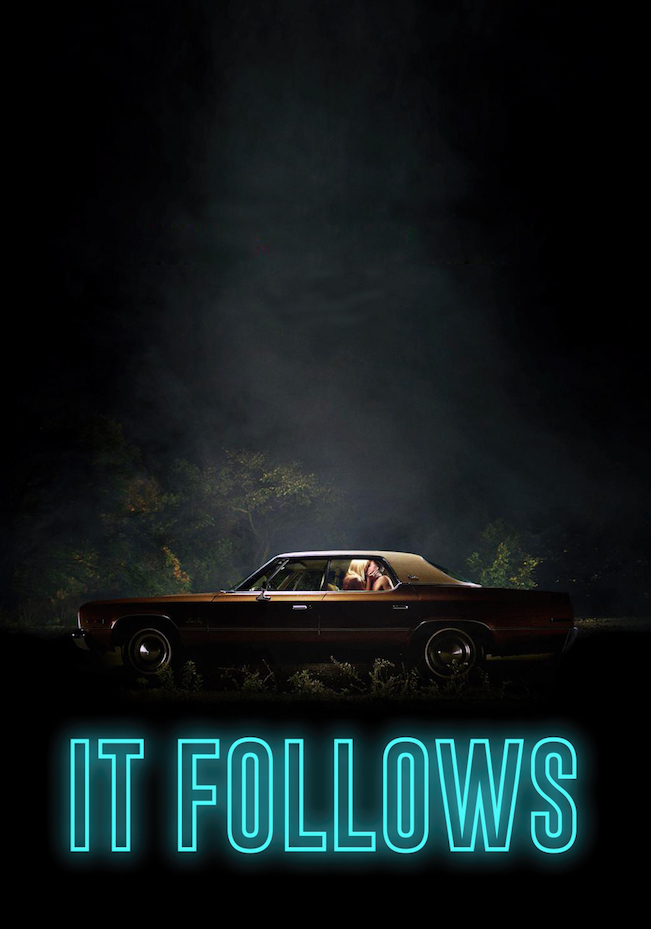
“It could look like someone you know or it could be a stranger in a crowd. Whatever helps it get close to you.” IT FOLLOWS David Robert Mitchell. 2014
It amazes me that David Robert Mitchell made It Follows for just at $2,000,000. This film is more sleek, professional and better crafted than most films with a budget towering closer to $50 million. An impressive feat to say the least.
The film is masterful from every perspectives. Mitchell has created a sort of alternate world in which his characters and story reside. This world feels “familiar” but somehow none of it is quite right. It seems like we are in a sort of dream where everything seems like it could be from another era — even as far back as the mid-70’s — yet there are cell phones and modern cars, but there do not appear to be any modern televisions or computers. Instead, this is a world filled with typewriters, somewhat out-dated medical supplies and odd mixtures of clothing/hairstyles that don’t quite seem “current” or appropriate to the 21st Century. This disoriented world helps Mitchell achieve a deeply creepy vibe that starts almost immediately.
Horror does feels like the main goal of this movie. Mitchell is more concerned with psychology, paranoia, sex. And most specifically a sort guilt or worry attached to casual sex. The lead characters fears are immediate and are presented as “fact” — these paranormal stalkers are unnerving. As Jay’s fear and paranoia take over her life, she finds herself facing ethical decisions which she quickly dismisses. Jay is being stalked not only by some sort of paranormal rage, but guilt.
The importance of this smart and polished movie is the way Mitchell manipulates every aspect of his production to create an almost immediate tone of danger/doom. This tone is carefully articulated that it becomes a character. More profoundly creepy than scary, It Follows slips under your skin long before you recognize it.
The entire cast is exceptional, but it is the synthesis of cinematography, musical score, precise editing and such well planned writing fuses into an absorbing and unforgettable film. Mike Gioulakis’ cinematography and Rich Vreeland’s retro score deserve a great deal of credit. And Julio Perez IV demonstrates film editing at its best. But this film is clearly constructed by its director. David Robert Mitchell provides many clever details that draw viewers back for repeated viewings. A great example: An abandoned “Foursquare” style house in which the characters explore. It is not clear if Jay or any of the characters realize why this construction is so related as means of hiding and escape, but we are. A partial reading from a T.S. Eliot poem is also another way of articulating what is happening. If you enjoy horror or experimental films, It Follows will satisfy fans of both genres. I suspect that love and admiration for this film will only grow stronger as time goes on.

The hierarchy and corruption of a sort of boarding school for the deaf becomes something of staggering depth. The Tribe Miroslav Slaboshpitsky, 2014
Like the majority of filmmakers working out of Eastern Europe, Myroslav Slaboshpytskiy’s The Tribe is about as dark, bleak and grim as cinema can get. It is also something dramatically different than I’ve ever seen on a movie screen. The plot of the film revolves within and around “life” in a sort of dystopian school, shelter, home, trade school or dorm for The Deaf. The true purpose of where we find ourselves is suspect.
No auditory speaking, no subtitles — essentially no sound save the breathing and movement of fingers, hands and arms. This is not some cheap marketing stunt. This is pulling the audience into the perspective of the characters who do not have the benefit of sound. We are essentially pulled into a “world” within which we have no way of easily understanding what is being communicated. The impact is almost without measure. Myroslav Slaboshpytskiy’s cast is deaf. They communicate in sign language which very few of us actually know. To the director and the casts’ credits, it doesn’t take us long to determine what is going on, but it does serve as a sort of portal toward metaphor and allegory that would not exist without this challenging perspective.
Welcome to a world where all understanding and communication is stolen. Welcome to the world of The Tribe.
Cinematographer, Valentyn Vasyanovych, captures everything in an almost formalist and interesting set of long-takes. The art of cinematography is crucial here and extraordinary. Without question, we would be watching closely anyway, but Vasyanovych’s work lends itself to pulling us even closer in our almost dazed gaze. When our main character shows affection toward another, the possibility of being loved seems cruel to the other. Not fully certain what is stated between these two young people, but it certainly feels as if “Anna” feels that there is no room for “love” within the world in which both are trapped. The scenes between Anna and Sergey are intense, erotic and frightening. Partly because we are never sure exactly what is being communicated. Their argument seems like an outburst of violent gestures, grunts and thumps. The sexual intimacy is both beautiful and somehow disturbing. Especially given what we learn is actually going on within this dark and fractured world of a state-funded (?) school / dorm. There are a great many disturbing aspects in The Tribe. In fact, some of this film is more than a bit difficult to watch. And watching is key here. We have no choice but to watch, to blink or look away is to miss out on vital information about his grim world.
This film is a traumatic reminder to the audience who only have limited access to this tribes’ world. In more than a few ways we are transported and trapped within their world. Certainly not an easy film. But the vitalness and the cinematic magic is impossible to deny. And in my opinion, it would be tragic to miss this movie. An unforgettable sort of silent movie. …with no title cards to guide you. Sadly The Tribe received a very limited US release. But it will be coming forward via VOD, DVD and Blu-ray soon and is already available in the UK. If you love the art of film, you will not want to miss The Tribe.
One film that really surprised me was a movie that never seemed to capture the attention of audiences or film critics as it really should have: Hannah Fidel’s 6 Years.
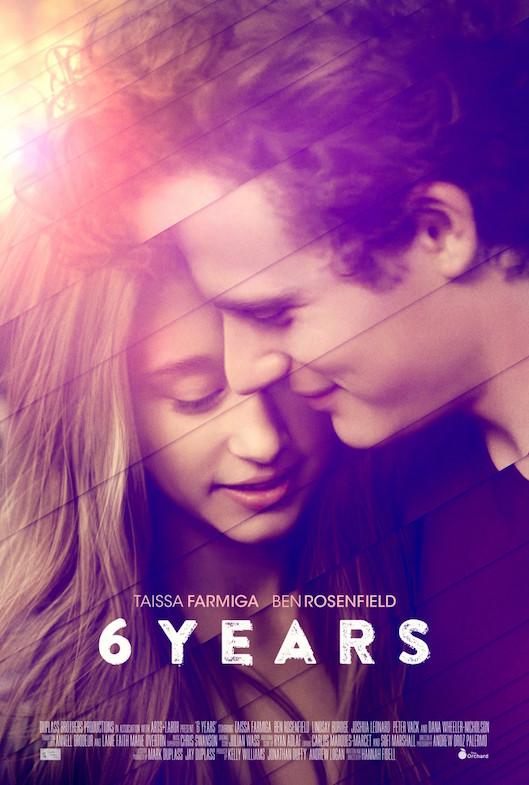
“I can’t not see you every day. I can’t not be with you.”
6 YEARS
Hannah Fidell, 2015
“6 Years” is not an obvious film, but it may have been the way the film was marketed and filmed that confused potential viewers. At a time when it is literally almost amazing that any woman is able to command a film both as Director and Writer, it disappointed me that Fidell received such little support for her film. Brutally honest, 6 Years offers a great deal of insight into the messiness of the human condition. After six years of times spent in love, a couples’ mutually shared lives are on the cusp of major change. The question Fidell’s film poses is not “Will they be able to make it work?” The question here is “Should they even try to make it work?”
As in “real life” — the answer is not simplistic or easy to face.
6 Years explores a relationship from a perspective that few filmmakers have been willing to take. This film isn’t aiming to provoke. It aims to be honest. Taissa Farmiga, in a role that comes close to equaling the skill of her older sister, plays a young woman with some very serious issues. As kind and loving as “Mel” is, she can be equally abusive. It doesn’t take long to realize that this beautiful and seemingly petit woman has very little control over her anger and frustration. Thanks to the filmmaker’s script, direction and her leading actors’ skills — this topic does not have to be discussed or overly analyzed. 6 Years presents the male of the relationship as the one who is actually the most vulnerable. “Dan” has no recourse. He has no way of protecting himself. He could, but to do so could harm the person he loves and could potentially crash his entire future. Ben Rosenfield’s performance is the magic of the film. He is able to portray “Dan” in a compelling mix of love, hurt, fear, anger and confusion. These are two actors to watch. A great deal of skill is presented by both from the film’s start to finish.
This is not your average cinematic “love story.” But this is most certainly about two people who are very much in love. The use of romantic tone is counter-balanced by the startling honesty with which the film bluntly steers us. Within the first few minutes, Hannah Fidell drenches her film in the glow of teen romance. Rays of sunlight drip over her two lovers as if waiting for a pop ballad to fill the aural space around them. This is not a mistake. It was a smart choice. The sunlit-kissed and dewy world of 6 Years, both informal and lush, reminds us that we are entering that magical and exhilarating feeling of first love. And this is true love. These two people have not yet forged forward enough into life to be fully weary, tired or jaded. They are young and full of promise. The power of their connection resonates and entices. So when our two protagonists come to the crucial moment of answering the film’s core question, it makes the reality of the film all the more potent. 6 Years is exceptional and deserves attention and a critical revisit by many.
When Elisabeth Moss’ Catherine smiles and jokingly says to her best friend, “Thanks for the exile.” It is more than half way through Alex Ross Perry’s odd film that we realize that a whole lot more can be read into Catherine’s seemingly sweet note of thanks to her pal. Welcome to the unique and somewhat familiar universe of Queen of Earth.

Alex Ross Perry’s film is clearly inspired by several key films of Robert Altman, Roman Polanski and even Rainer Werner Fassbinder. But make no mistake: This film is absolutely true and unique unto itself. Carefully articulated and masterfully crafted, this film never veers. And if the audience is able to channel back to the idea of psychological melodramatic Surrealism, it will hold attention from beginning to end. It is as if the writer/director has created the perfect cinematic symphony with an orchestra full of exceptional players: Keegan DeWitt’s musical score, Sean Price Williams’ cinematography, Robert Greene’s tight editing and three actors in key supporting roles — all pull together to form an ideal “stage” for the Perry’s two key leading ladies.
Katherine Waterston’s portrayal is a mix of “ice” and “fire.” She moves about the film fully formed like twisted idea from a Modigliani painting merged with a 1970’s Holly Hobby Doll. But the heart, soul and ultimate power emanates from Elisabeth Moss. The camera seldom moves away from her and you don’t want it to — she is captivating and brilliant. Alex Ross Perry has created a real bit of magic with Queen of Earth. Despite a low budget and an idea that seems ripe for parody — he has created a stunning film as interesting as it is disturbing. Long after the film ends, the true horror of what has been played out takes on a deeper and more sinister element. This is most especially true when we realize that the ideas of reality, dream, paranoia, anger and insanity reach points where it is impossible to know what has actually happened. I’ve not been able to get this film out of my head since I saw it.
As much as Queen of Earth caught me off guard, John Magary’s The Mend threw me off the road.

Brotherhood explored in a whole new way…
THE MEND
John Magary, 2014
This is John Magary’s feature length film debut is impressive. In fact, there is no sign of a first time filmmaker to be found. And he was blessed to secure Josh Lucas as Mat. Lucas delivers his best on-screen performance thus far. Essentially an incisive character study of two brothers. Both are miserable. One represses everything and attempts to force his way through. The other, Mat, seems to have slipped into an empty world of damage. As cruel as it is deeply and artistically insightful. These brothers are caught in vicious cycle of dysfunction that may or may not have been “passed-on” or “pulled” into their respective psyches. Often very angry, grim, profane and always somehow consistently subversively comic — Magary’s movie does something almost unheard of as we move well into the first quarter of The 21st Century, it is original in every way. This is not a celebratory man-boy movie. Nor is it comfortable with positioning itself as a revelatory study of family healing. The Mend reminds me a great deal of loose comedy I would expect to see come to us from France. This is a smart movie. Realistic and non-satirical, there is nothing cute or twee here. A bit like a dirty puppy you can’t decide to pet or lock out of your home, this film is compulsively bounding about with little to no concern for things that get broken as it runs about. This surprisingly dense film stays with you and invites repeated viewings. And it gets better every time I see it.

Filming with smart phones…
TANGERINE
Sean Baker, 2015
Sean Baker’s Tangerine is raw, crude, profane and full of heart. It also happens to very funny. Filmed using only iPhones and other smart phone related devices, Baker creates an unexpected and effective look for the movie. The film follows two girlfriends on Christmas Eve into the early hours of Christmas morning. These are two trans-women of color. They also happen to make their livings as sex workers. Kitana Kiki Rodriguez’s “Sin Dee” has just been released from a month stay in jail. Her best and far wiser pal, “Alexandra” (played with equally realism by Mya Taylor) makes the mistake of mentioning that Sin-Dee‘s man has been having an affair with another woman. …A non-trans-woman!!! News of this sends Sin Dee into a full-on freak-out which we quickly suspect is a daily part of her routine. We follow these two friends and a taxi driver pursuing their day. There are a number of reasons this film works so well. The actors are pitch-perfect in their roles. Nothing happens that isn’t believable. And Baker smartly offers no excuses for or judgements on his characters’ lives. These people are presented for who they are. Also, as sordid as the movie gets, this is really a film about survival and friendship. Rodriquez and Taylor manage to consistently convey a kindness beneath the rough demeanors. The fact that the film is focused on two Trans-women and people who love them is not presented as plot. It is presented as a matter of fact. See it.
Jason Banker’s second feature-length film, Felt, is possibly the most polarizing movie released in 2015.

Felt
Jason Banker, 2014
The San Francisco audience sat in silence as the credits rolled. The majority of the audience was female. I am male. But I approached and discussed the film outside with three young women. They were obviously shaken and unable to articulate how they felt about Felt. But each agreed that Banker’s movie conveyed an all-too real experience. The most expressive of the three women told me, “It’s so weird I hardly ever allow myself to think about it. But I’m always so uncomfortable when I’m in a room with more than a few men.” The other two women agreed, but none could articulate why. As I walked away one noted to me, “Actually, it was in that movie.”
The first line of the movie is “My life is a fucking nightmare.” It is delivered in an almost “little girl” voice of a young adult woman. The woman is our protagonist. Amy Everson is more than the lead actor of Felt, she is also the co-writer of what appears to be a fictionalized and possibly “amp’d-up” version of her own experience. The movie’s Amy has obviously survived some form of sexual abuse. The actual abuse is never stated or confirmed, but it clearly happened. Her friends want to help her, but are growing weary of her coping skills. Not only have these skills become isolating, they are provocatively inappropriate and she is becoming too over-protective of them. Amy creates artwork and most importantly artistic costumes in which she has allowed herself to find her inner-strength and push away her fears of men. The costumes are perversely anatomically-correct. She has found a way to funnel her anger and fears through her art. The dark side of this coping method is that her once comforting art (stylized armor to self-protect) has begun to form into a sort of weapon with which she can project. “Armors” made of felt is starting to fuel a fantastical idea into a warped realistic alternative.
We see Amy in several scenes with single men of her own age. These scenes feel so real it hurts to watch. Each of these interactions reveals aspects of male behavior about, toward and with women. It is unsettling. The men Amy meets are dismissive, aggressive, inappropriate and passively menacing. If there is even an initial “friendliness” — it quickly feels false as a sort of menace or agenda seems to constantly be put into play. Her girlfriends seem to be “aware” of this, but almost come short of stating that it is easier to just “accept” the cultural misogyny. In essence it appears that Amy‘s more well-adjusted and functioning friends have and are assimilating into “Rape Culture.” The film is a slow-burn that seems to ask one core question: “How does a sexual assault victim heal in a world that almost seems to support the assault?” By the time a seemingly understanding and caring male (played beautifully by Kentucker Audley) enters her world it might be too late.
Bold, disturbing and infuriating, Felt is a movie that seeks to provoke. Jason Banker has filmed it all within the framework of Art Horror. The artistic mastery of his filmmaking can’t be denied. The casting of a non-actor in the lead role she has inspired is the film’s weakest link. However it does feel as if Amy Everson’s mono-tonal and expressionless visage often feels as if it might have appealed to Banker’s intentions. Amy wanders and wonders throughout the film as if numbed to her own body. Felt spews a firm depiction of cultural/societal misogyny that never seems to wain. Inappropriate and angry, Felt offers no middle ground. Audiences either hate or love it.
When Gregg Turkington appears on the screen of Rick Alverson’s Entertainment as Neil Hamburger, you know you’re in for a unique film experience.

“Why? Whyyy? Whyyyyyy?!?!?!?!” ENTERTAINMENT Rick Alverson, 2015
Gregg Turkington (AKA Neil Hamburger) plays The Comedian. Our comedian is on a tour of Mojave Desert run-down nightclubs as the headlining comedian. With Tye Sheridan as his Opener Act, it is clear that this kid’s rather ironic clown-act is a more pressed and post-modern take on what The Comedian is trying to do. Subverting normal cinematic convention, Rick Alverson takes us into the increasingly disturbed mind of a depressed, aging, failing and lost comic. The Comedian‘s self-loathing and existential crisis start out as rants to the audience and then quickly escalate via a series of increasingly strange and surreal encounters and experiences. John C. Reilly makes a great appearance as a somewhat “defective” but concerned cousin. Michael Cera and Amy Seimetz also pop up along the tour.
Profoundly strange, magical, grim, comical and impossible to forget. Rick Alverson has crafted an amazing experimental film. Entertainment is his best work yet and one of the most impressive films to screen this year.
When Cynthia’s lover, Evelyn, assures her by saying, “I love you. I know I have a different way of showing it. But I love you.” It is hard to know if her idea of “love” is far more “show” than “true.” Of course, in a relationship true knowledge of the other is sometimes places on unquestionable ground. Peter Strickland’s The Duke of Burgundy presents a great deal more than expected.

“Would a human toilet be a suitable compromise?”
THE DUKE OF BURGUNDY
Peter Strickland, 2014
It is interesting to note that Peter Strickland’s initial motivation to make this film was inspired by the early sexploitation films of European filmmakers like Jess Franco and Jean Rollin. Just as 2012’s Berberian Sound Studio sprouted from an interest in the infamous giallo Italian films of the 1970’s, The Duke of Burgundy is only loosely tied to Franco and Rollins’ cinematic ideas. While Berberian Sound Studio took place in the paranoid psychosis created by assisting in the sound design of a giallo horror film, that movie went some place far deeper than giallo ever ventured. The same can be said of Strickland’s latest film which follows two lovers as they approach a troubling shift in their relationship. Carefully and artfully constructed, the film’s lush and surreal setting serves as more than an erotic set-up. Peter Strickland refuses to restrict his story to the limitations of eroticism or to the perverse objectifications of the couple’s BDSM games. As the meticulous film unfolds, there is an unsteady feeling that The Duke of Burgundy has no limits. This film offers its audience no safe word.
While the film is ripe for erotic exploration, Strickland and cinematographer, Nicholas D. Knowland, apply surprising restraint. Whereas Franco or Rollin would have felt the need to push the boundaries of KINK or nudity or introduce a full-force menace, Strickland actually goes to the most vulnerable aspect of humanity. This is a film of the heart. This is less about kinky sex games as it is more about love that has begun to bore, sour and fade. Despite the many uses of Surrealism and Cinematic Metaphor, this movie is about two people who must either accept the other’s need for power or refuse it and move forward.
Sidse Babett Knudsen and Chiara D’Anna are both up to the films challenges. And they are challenged. Much of what we learn is told in their eyes, movements and phrasings. For a film so firmly rooted in a lesbian couple’s sexual games, one might anticipate that there would be a high degree of eroticism. What might have once been a mutual erotic game of desire has grown into twisted ritual that could easily be misread as a cruel boss and her over-worked maid. Only one lover is being satisfied. The attraction of mutually shared joy related to entomology appears to be the only truly intimate connection. Hence the film’s odd title, The Duke of Burgundy is a type of butterfly unique to southern England’s spring butterfly. But even this connection is becoming a challenge for both. As we watch the two women listening or leading lectures to other entomology-concerned women, we notice that there are perfectly dressed and coifed mannequins sit in the audience with the live women.
More neurotic than erotic, the characters fight to stay within the lines constructed by desire. One or possibly even both feel as if intimacy has reduced each to mannequins being placed in position. As often the case, the bottom is the master. The top or dominating is actually the slave. This film’s meaning is not limited to a lesbian relationship or BDSM. This is a film about love and trying to work through the challenges of a relationship. Unlike those mannequins seated for the lectures, this film is alive, vibrant and pulsating with blood and tears. And by the time reaches the ending point we understand that both women are vested to each other, but can love survive such rigid rules and restrictions? Strickland’s movie is spot-on and unforgettable.
A kind older woman offers a bit of insight to her uncomfortable house guest who she has mistaken for a Japanese tourist, “Solitude? It’s just fancy loneliness.” This comment offers no solace to the heroine of The Zellner Brothers’ Kumiko, the Treasure Hunter.

KUMIKO THE TREASURE HUNTER
David Zellner and Nathan Zellner, 2015
David and Nathan Zellner’s film is an abstractly loose variation on an actual incident involving a Japanese woman who died in the unforgiving climate of Fargo’s winter. The real “truth” was she was there to revisit memories of a past love before killing herself. But due to misunderstanding her English prior to her death, a false rumor began to morph into a “truth” that she had traveled to Fargo to find what she “believed” to be the stolen money buried in The Coen Brothers’ 1996 film, Fargo. Kumiko, Treasure Hunter plays with the the idea that has remained firmly grounded in the realms of urban myths generated by The Coen Brothers movie.
Ringo Kikuchi gives a painfully realistic performance of a woman so depressed and detached from her own world in Tokyo she has begun to slip into a world of isolation and retreat. Kumiko has lost the ability to apply logic. She no longer knows reality from fantasy. Wisely, it is never explained why or how Kumiko manages to “unearth” a battered VHS tape of Fargo. But it is clear she mistakes that iconic film’s opening statement, “This is a true story” for “fact” and assumes she is seeing some sort of documentary. Her inability to apply logic to her situation and desires leads her to abandon everything, including her beloved pet rabbit, to find her way to Minnesota in pursuit of what she now perceives to be her life’s mission. She is hellbent on finding that case of money she saw Steve Buscemi burry in the snow.
David Zellner’s film is even more quirky than Coen’s Fargo. This quirkiness is established in the ways we see a clearly unstable woman interacting with her Japanese peers, boss, family and the local Americans as she refuses to relent in her pursuit. It is a fascinating journey to follow. Mixing realistically comic encounters with the increasing uneasy tone is achieved by a balance of acting fused with effective musical score, elegant editing and stylistic camera work. Sean Porter’s cinematography is of particular note.
The movie is constantly challenging the viewer to know if it is “ok” to chuckle/laugh or if this reaction is inappropriate. Rinko Kikuchi never drifts away from what is clearly a tragically lost character in dire need of help. This entire cinematic experience is both fascinating and devastating in equal measures. Kumiko, The Treasure Hunter is one for whom we cheer. And she is also a tragic parable of humanity pursuing dreams that are impossible to achieve. This masterful film weaves its way into our minds and hearts. One should not miss the opportunity to see this movie. It carries a disarming level of power.
It might be that I will forever remember 2015 as the year that Ana Lily Amirpour made her feature-length film debut. I am unable to choose the best or my absolute favorite film of the year, but A Girl Walks Home Alone at Night is the one I’ve seen the most. Unlike many artists of her generation, Ms. Amirpour appreciates the audience. Clearly intelligent, effortlessly interesting and always engaging when asked to sit down for a Q&A — Ana Lily Amirpour is honest but never at the expense of the individuals asking her questions or offering her insights. Her first film is often compared to the work of Jim Jarmusch. This is not a comparison she can agree with and she handles it with humor and kindness. She is clearly not a big fan of Jarmusch’s work, but she never takes the opportunity to slam him or the idea that he influenced her film. If there is any clear influence that shines through this amazing film it is that of the late 1960’s Spaghetti Western.

The chador as cape…
Sheila Vand shows her teeth
A GIRL WALKS HOME ALONE AT NIGHT
Ana Lily Amirpour, 2014
Cinematography | Lyle Vincent
I think the reason we think of Jim Jarmusch as we watch A Girl Walks Home Alone at Night is not because it is sleekly shot and designed in black and white. It is because the movie utilizes amazing music, is quietly intellectual and from beginning to end the movie oozes natural cool. The best kind of cool. Amipour’s film never feels like it is trying to be “cool” — it simply is.
The stunning film alternates between being an observation of humanity and vampiric horror. Ultimately, the stronger emphasis is on loneliness, isolation, the need for acceptance and love. There is actually a whole lot going on in this tight movie. This stylized movie is captivating, magical, mysterious and unique. It is a dark visionary movie that manages to evoke an air of hope. As I watched Ana Lily Amirpour’s film for the first time, I got the distinct feeling I was sharing in the impact and realization that every one of us in that screening room was witnessing the emergence of an important cinematic voice. I’ve lost count of how many times I’ve seen this sleek film. The perfect balance of image, sound and ideas.
It begs for repeated viewings. And it offers something we rarely see in film these days: You hate to see it come to an end.
I can’t wait to see what Ana Lily Amirpour does next. Her next film is in post-production. I can’t wait to see if I can get lost in it the way I can in A Girl Walks Home Alone at Night.
There are several movies that have yet to open. They are what most would call “Oscar Bait.” The older I get the less patience I have for those kind of movies. I’m not sure if any of my favorite films of 2015 will make it to Oscar consideration. The thing is, this has become more a sign of quality to me than if they were. Let’s reject the brainless mainstream and strive to find art that offers more than the predictable. Support the Film Artist.

Cool not because it tries to be, it simply is…
A GIRL WALKS HOME ALONE AT NIGHT
Ana Lily Amirpour, 2014
Matty Stanfield, 11.27.2015



